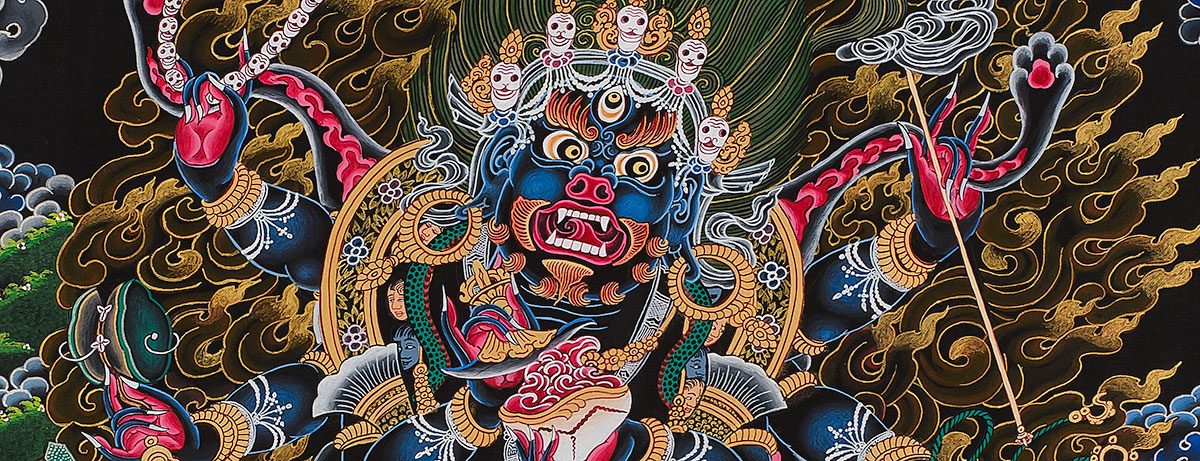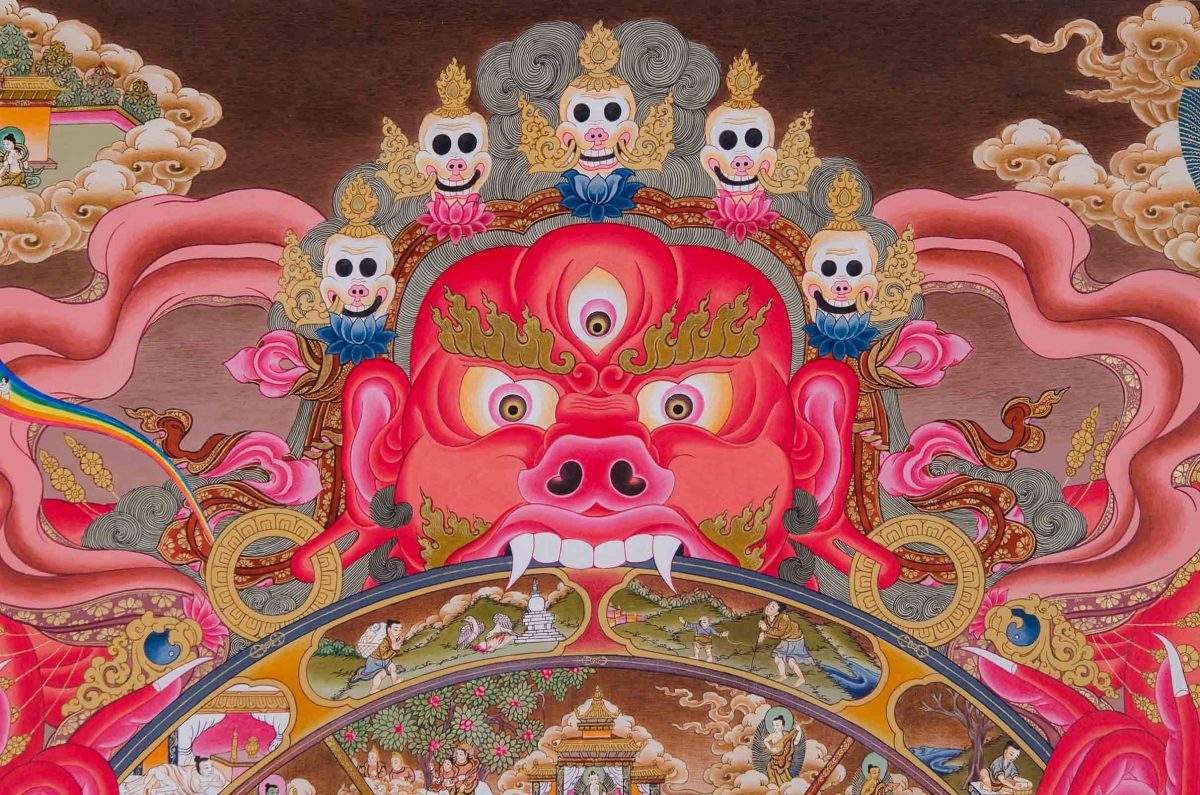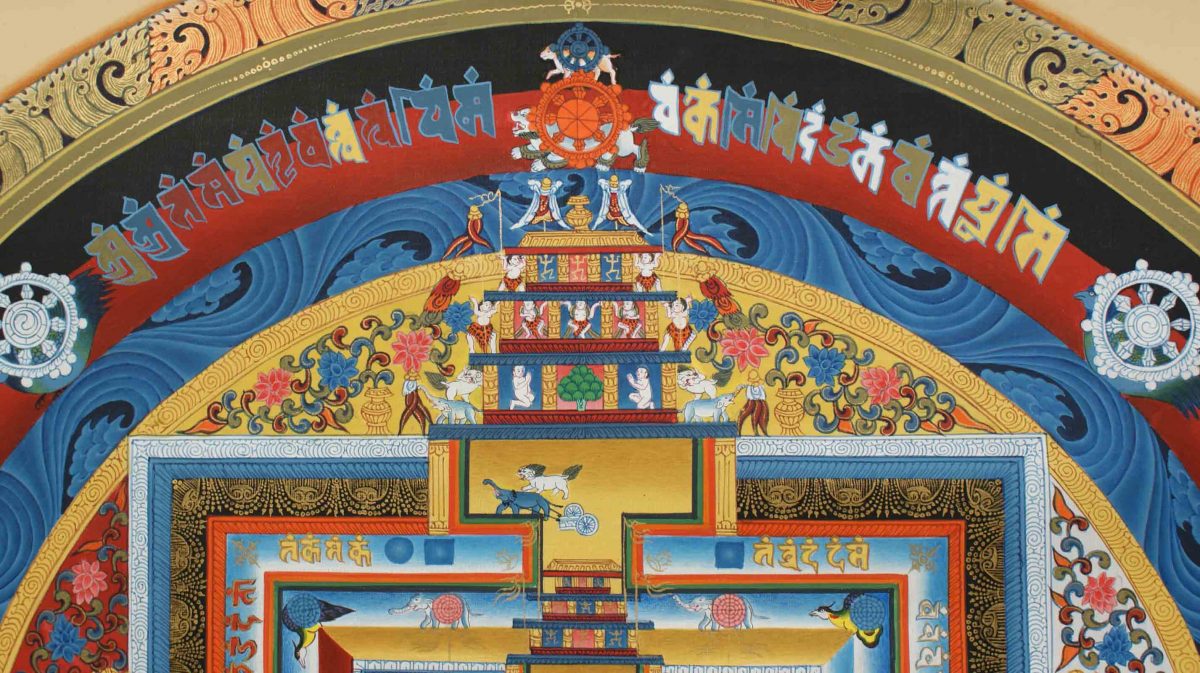Black or blue in colour, the Mahakala has six arms and two legs. Its Sanskrit name is Sadbhuja Mahakala, while its Tibetian name is Chadroukpa. In his right hand he holds a necklace of skulls, a curved knife, and a dhamaru. In his left hand is a trident, a kapala, and a cord.
The Wheel of Life – Samsara
By Samsara (bhavachakra) we are talking of all existences that are conditioned by: ignorance, suffering and the unexplainable flow of time, often represented by Yama holding the wheel of life. Nirvana, on the other hand, represents the world unaffected by negative emotions, which by definition is the nature of happiness.
Mandalas and Meditation
The Mandala of Kalachakra can be considered a simple “diagram” of the basic principles and structures to follow when Meditating.It is the aerial view of the Kalachakra Temple, situated in Lhasa and contains 722 Deities, and at its heart on a Lotus flower, a single Buddha : Kalachakra
Motherly Compassion – Green Tara
The Green Tara is often painted on Thangkas and her symbolism is deep yet simple. She can be considered as the Mother, ready to help and love all beings that pray to her. Considered as one of the most important deities in the Buddhist pantheon and widely revered in Tibet, her compassion is infinite. This article will try and shed some light on the symbolism of this Thangka.
Vajrasattva – the Practice of Purification
White in color and bearing all the princely ornaments and crown, he will always be represented in the form of sambhogaya, translated as “Glorious Form”. Vajrasattva belongs to the family of Akshobya. Some believe that he is an emancipation of Vajradhara, while others will regard him as the patriarch of the 5 Dhyani Buddhas.
Maitreya – the Buddha to come …
Buddha Maitreya is considered to be the Buddha that will come after Shakyamuni Buddha, and is often represented as a Boddhisattva. There are numerous ways to represent him, and we will analyse one of the most common Thangkas and take a closer look at the story of Asanga, Maitreya and the dog.
Manjushri – Wisdom and Kathmandu Valley
Considered as the personification of the combined Wisdom (Prajna) of all the Buddhas. It is common to see Buddhist scholars reciting his mantra in the morning, and there are many legends of beings with exceptional intelligence following their devotion to Manjushri.
Pauba – A Contemporary Newari “Thangka”
Pauba means painted scroll in Newari : the dialect of my forefathers, founders of the Valley of Kathmandu. The Pauba is distinctively different from the Thangka, the artist is given more room to express himself, while the Deity is always painted with directives.
The 12 Interdependent Factors
The Wheel of Life, contains twelve unique images each linked to one another called dvadasanga pratityasamutpada or the 12 Interdependent Factors. These can be found on the outer most circle, each image has its own symbolism to help us better understand Samsara.
- Page 1 of 2
- 1
- 2



